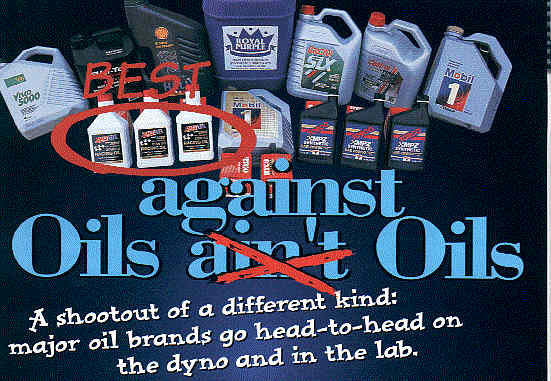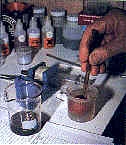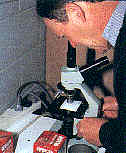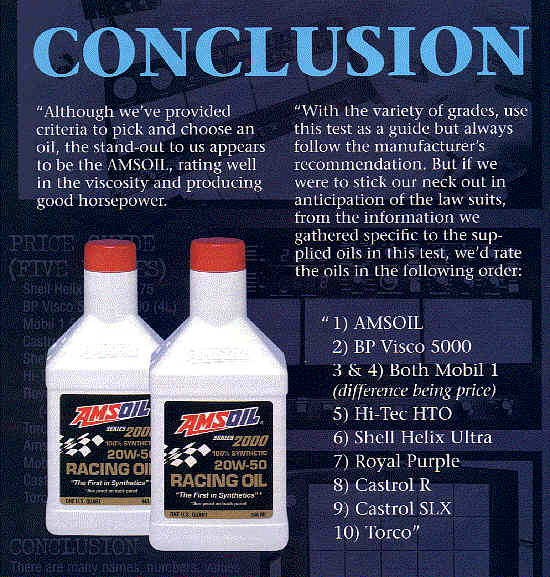|
|
|
|
|
"What do you know about the
oil in your car's engine? From the ads, you're led to believe the most
exotic part of a Ferrari's engine is in the sump," writes Fast Fours
and Rotaries (FFR) (July 1998), an Australian performance car
journal. |
|
|
Test
Procedure |
|
|
|
|
|
|
The oil probe is placed in a solution to free it of all oil, leaving behind just the raw wear particles. Once the magnet is clean, a piece of cellophane tape is applied to stick any metal particles for analysis either on a contrasting background or under a microscope. |
|
Viscosity
Test |
|
Amsoil Series 2000 Synthetic 20W-50 Racing Oil |
|
Oil |
Product |
Viscosity Loss |
Type |
Test # |
|
Torco |
MPZ |
18% |
Synthetic |
5 & 6 |
|
Shell |
Helix Ultra |
14% |
Synthetic |
8 |
|
Shell |
Helix Plus |
12% |
Petroleum |
1 |
|
Hi-Tec |
HTO |
8% |
Synthetic |
9 |
|
Castrol |
R |
6% |
Synthetic |
12 |
|
FFR points out that the loss of viscosity suffered by the five oils was very rapid. "Under normal conditions itís suggested oil which loses viscosity this quickly would be subject to significant losses over 5000 km [8045 miles]. Indeed, one would be suspect of the potential for increased wear over this period." |
|
Wear Metal Test
|
|
Amsoil Series 2000 Synthetic 20W-50 Racing
Oil |
|
Rating |
Oil |
Average particle size |
Overall (micron) |
Test # |
|
#1 |
Amsoil Series 2000 |
5-10 micron |
5-50 micron |
10 |
|
#2 |
Hi-Tec HTO |
15-20 micron |
10-60 micron |
9 |
|
#3 |
BP Visco 5000 |
15-20 micron |
15-60 micron |
4 |
|
#4 |
Shell Helix Ultra |
15-25 micron |
15-60 micron |
8 |
|
#5 |
Shell Helix Plus |
10-20 micron |
15-50 Micron |
1 |
|
#6 |
Mobil 1 5W-50 |
20-25 micron |
15-60 micron |
3 |
|
#7 |
Mobile 1 OW-40 |
15-20 micron |
15-50 micron |
11 |
|
#8 |
Castrol R |
20-30 micron |
15-100 Micron |
12 |
|
#9 |
Torco |
15-20 micron |
15-100 Micron |
5 & 6 |
|
#10 |
Royal Purple |
15-20 micron |
15-100 Micron |
7 |
|
#11 |
Castrol SLX |
20-25 micron |
15-100 Micron |
2 |
|
Horsepower |
|
|
|
Copyright © Amsoil 1999 |
|









